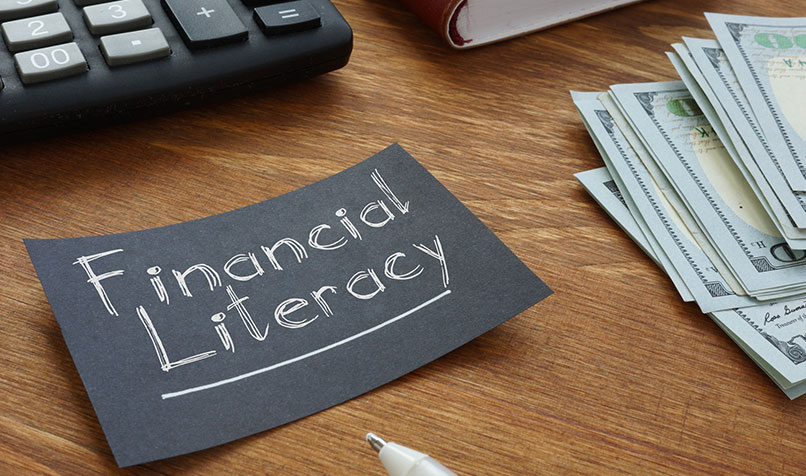American students are grossly underprepared to take control of personal finances. EVERFI’s 2019 survey of college students revealed that 53% feel the least prepared to manage their money, 36% of respondents already have at least $1,000 in credit card debt and 60% plan to take out loans to pay for school. The students that will inevitably have to take out loans for college will fall into debt because they will not understand how to get a good interest rate, or how to pay loans back. Mandatory financial literacy classes can solve this.
An economy seeking recovery from the coronavirus pandemic will be driven by consumer spending. But because of the debt amassed by America’s youth, most people will be concerned with paying off personal debts and loans, not spending. If personal finance classes, as a graduation requirement, were a part of the high school curriculum, then Americans would be able to effectively manage money and get better interest rates because there would be an understanding of how the financial system works and how to participate.
Currently, only seven states (Ohio’s law goes into effect this year) require these classes, while fifteen mandate that relevant materials are integrated into other courses. The problem is not just that the vast majority of American high school students are not required to take a financial literacy course, but the courses that are already required are not adequate. Alabama began requiring financial literacy classes for high schools in 2013, yet the state earned a D+ for financial knowledge. Similarly, New York, a state that requires that relevant course materials be incorporated into the curriculum, earned a D for financial knowledge.
Yes, someone can argue that if these classes aren’t working, then the government shouldn’t mandate them. But the truth is, these classes can work. Eight of the top ten most financially knowledgeable states have some sort of inclusion of financial literacy in their school systems and Utah, the most financially knowledgeable state, does mandate these classes.
A comprehensive financial education class would cover topics including an introduction to taxes, budgeting, the stock market, credit and debt. This application of Just-in-time-learning will equip students for immediate life after high school, focusing on the most pertinent aspects of a financial education. While students would ideally have access to a more in-depth personal finance curriculum, schools need to concentrate on strongly reinforcing ideas of debt-avoidance and how to get good credit. If these concepts are taught well, more Americans will be able to effectively participate in the economy and generate growth. And this boost in participation can still exist when personal loans are present.
Debt is not fundamentally evil: loans can give people incredible opportunities, but issues arise when people do not understand how their loans and finances work. LendingTree found that 37% of Americans have “no idea” how their credit score is determined. Furthermore, Pew, and the St. Louis Federal Reserve Bank, found that around 12 million Americans take out payday loans each year at an average interest rate of 391% after two weeks. Millions of Americans fall victim to predatory lenders simply because they are trying to pay for higher education, make a downpayment on a house, trying to buy a car, or attempting to pay off other personal debts. And mandatory personal finance classes are part of the solution.
A study from the German Institute for Economic Research proves that financial education classes will be able to address these concerns. Their meta-analysis of 126 impact assessments found that financial education leads to a better understanding of financial literacy at almost the same rate that a science class leads to a better understanding of science. At the end of the year, a biology student might not be able to perfectly explain epigenetics, but at the very least they will know that the mitochondria is the powerhouse of the cell and that it generates chemical energy.
It’s the same with personal finance: a high school student should not be forced to study the nominating process for the Federal Open Market Committee, but they should at least be prepared to understand interest rates, debt and credit.
At Fieldston, Walter Levis teaches Money and Morals: An Introduction to Financial Literacy. Money and Morals is a prime example of what a comprehensive financial education class should teach, covering topics from the Federal Reserve, to the stock market, to personal loans, mortgages and more. However, not many students each year elect to, or are able to, take Money and Morals since it’s offered as an Ethics elective. This class is a model for financial education standards and should be used as a guide for the school on how to implement a larger scale financial literacy graduation requirement. On the national level, courses should follow a similar guide as well.
If the government does not mandate financial literacy classes as a graduation requirement in high schools across America, then our schools will continue to be responsible for perpetuating a cycle of debt and ignorance around money. Nobody should be forced to sit on the sidelines of the American economy because they were never taught about interest rates or credit scores. The absence of a personal finance education is one of the largest flaws in the American education system and it will only continue to harm economic growth until financial literacy classes are mandated in schools across the country.






